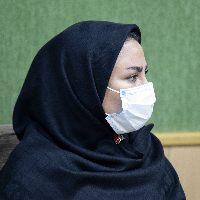An algorithmic approach for determining the optimal sowing dates for crops in Iran
Author(s):
Seyedreza Amiri * , Elyas Soltani , Seyed Majid Alimagham , Alireza Nehbandani , Ebrahim Zeinali , Benjamin Torabi , Eskandar Zand , Sorayya Ghassemi , Omid Alasti , Amir Dadresi , Roghiyeh Alsadat Hosseini , Mahbobe Zahed , Hosna Fayazi , Hossein Kamari , Rahele Arab Ameri , Zahra Mohamadzadeh , Samaneh Rahban , Samane Mohamadi , Saleh Karamat , Afshin Soltani
Article Type:
Research/Original Article (دارای رتبه معتبر)
Abstract:
Background and Objectives
The selection of sowing dates within crop simulation models holds great importance when addressing issues pertaining to food security and climate change. Typically, statistical analyses lead to the adoption of a fixed sowing date in these models. However, it should be noted that farmers do not adhere to such a rigid schedule; rather, their sowing dates are subject to annual variations influenced by weather conditions. Consequently, incorporating climatic data becomes an effective methodology for developing algorithms and estimations regarding sowing date within crop models.Materials and Methods
This study involved the collection of information regarding the sowing dates of 12 important crops in Iran from various provinces, with the assistance of Agricultural Research, Education and Extension Organization (AREEO) 's provincial centers. Subsequently, algorithmization was performed for each crop based on the sowing dates of farmers. The SSM-iCrop2 model was utilized to evaluate different threshold values for each algorithm in each crop, and the appropriate value was selected to ensure that the predicted sowing date aligned with that of the farmers. To evaluate the sowing algorithm, observed sowing date data were collected from various studies. For those studies where observed sowing dates were available, algorithmization of the sowing date was conducted.Results
The results of the evaluation of different algorithms indicate that the third algorithm is well-suited for autumn crops, including wheat, barley, rapeseed, chickpeas, lentils, potatoes, and sugar beets, with sowing recommended when the average air temperature is below 16°C. Moreover, this temperature threshold increases to 17-20°C in warmer areas. Algorithm number two was found to be suitable for spring cultivation of crops such as beans, chickpeas, lentils, and potatoes, with sowing recommended when the average air temperature exceeds 7°C. For spring sugar beets, this temperature was 12°C, and for corn in cold climates and summer crops such as beans during early sowing dates, the recommended temperature range was 15-17°C.Conclusion
The results of our study can be utilized in crop simulFor spring sugar beets, this temperature was 12°C, and for corn in cold climates and summer crops such as beans during early sowing dates, the recommended temperature range was 15-17°C.ation models to replicate farmers' sowing behavior. Additionally, these algorithms can be applied in regions where information regarding sowing dates is unavailable. By incorporating an algorithm instead of a fixed sowing date within the model, a sowing date that more closely aligns with that of the farmer can be simulated, particularly in situations where various regions and years are being considered.Keywords: Crops, Simulation, SSM-iCrop2,Temperature.Keywords:
Crops , Simulation , SSM-Icrop2 , Temperature
Language:
Persian
Published:
Journal of Plant Production, Volume:32 Issue: 1, Spring 2025
Pages:
95 to 117
https://www.magiran.com/p2866412
سامانه نویسندگان
اطلاعات نویسنده(گان) توسط ایشان ثبت و تکمیل شدهاست. برای مشاهده مشخصات و فهرست همه مطالب، صفحه رزومه را ببینید.
مقالات دیگری از این نویسنده (گان)
-
Analysis of Management Factors Affecting Irrigated Wheat (Triticum aestivum L.) Yield Gap in Different Regions of Lorestan Province using the Comparative Performance Analysis (CPA) Method
Alinazar Nazari, *, ,
Agroecology journal, Spring 2025 -
Simultaneous Occurrence of Two Proline-197-Threonine (Pro-197-Thr) and Tryptophan-574-Leucine (Trp-574-Leu) Mutations Associated with Resistance to Iodosulfuron-Methyl-Sodium+Mesosulfuron-Methyl in Annual Ryegrass (Lolium rigidum Gaudin)
Sanaz Hanifezade Erdi *, Mohammadtaghi Alebrahim, , Hamidreza Sasanfar, Motahareh Mohsenpour
Iranian Journal of Weed Science, Spring-Summer 2024 -
Investigating the simultaneous effect of waterlogging and salinity stress on some agricultural traits, yield and yield components of wheat
Serollah Galeshi *, Mitra Toloo Hafezian Aval, Samereh Mohammadi Shermeh, ,
Electronic Journal of Crop Production, Spring 2025 -
Estimating Food Demand on Future )1429(: The Role of Population Size, Type of Diet and Loss/Waste of Agricultural Products
Seyed Reza Amiri *, Seyed Majid Alimagham,
Strategic Research Journal of Agricultural Sciences and Natural Resources, -
Adaptation of irrigated agriculture in Golestan province to water scarcity through optimizing cropping pattern
*, Abdolrahman Mirzaei, Safora Jafarnode, , Shahrzad Mirkarimi
Water and Soil Conservation, Spring 2025 -
Consequences of Water Reduction in Agricultural Sector and its adaptation capacity through Intensification
Seyed Reza Amiri *, Seyed Majid Alimagham, , Shahrzad Karimi
Water Management in Agriculture, -
Ethical aspects in accessing and exploiting genetic resources
Mohammad Jaffaraghaei*, Jahanfar Daneshian,
Journal of Genetics, Winter 2025 -
Documenting the Production Process of Faba bean (Vicia faba L.) in Gorgan, Ali Abadkatol and Aqqola Regions
Mohammadreza Mansouri Vajari *, , , Benjamin Torabi,
Iranian Journal of Pulses Reseach, -
Study the effect of the using of mycorrhiza and different levels of manure and chemical fertilizers on some traits of forage cactus (Opuntia ficus-indica L.)
Fatemeh Fateminick, Khosro Azizi *, , Omid Ali Akbarpoor
Journal of Crop Science Research in Arid Regions, -
Paya, a new maize hybrid, with relative resistance to common smut disease and suitable grain and forage yield
M. R. Shiri *, R. Choukan, M. Zamani, F. Azizi, A. Estakhr, A. Mosavat, M. Barzegari, Gh. R. Afsharmanesh, Sh. Fareghi, A. Shirkhani, M. Mohseni, A. Afarinesh, H. Haddadi, S. Khavari, K. Anvari, H. Darkhal, S. Ghasemi, H. Najafinejhad, B. Zand, A. Roozbahani, M. Motaghi, A. Mahrokh, S. Mobaser
Research Achievements for Field and Horticulture Crops, -
Parameterization and Evaluation of the SSM-iCrop2 Model for predict the cotton growth and yield in Iran
*, , , Farshid Ghaderi Far
Iranian Journal of Cotton Researches, -
The amount and How to distribute of chickpea and lentil yield gap in Iran
*, , , Benyanen Torabi
Journal of Crop Improvment, -
An assessment of LARS-WG’s model to forecast meteorological parameters for climatic zones of cotton-harvested areas over Iran
*, , , Farshid Ghaderi Far
Electronic Journal of Crop Production, -
Estimation of some parameters associated with nitrogen accumulation and remobilization in spring bread wheat cultivars
Arab Amerir., A. Soltani, I. Zeinali, B. Kamkar, F. Khavari
Iranian Journal of Crop Sciences,






